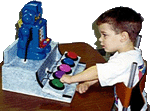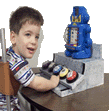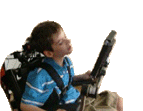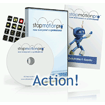Teacher-Parent Print Resources
| Item # | Product Description | Photo | Price |
|---|---|---|---|
| AC-AW02 |
Adapt My WorldShows dozens of easy-to-make accommodations developed by parents, teachers, and therapists for kids with special needs. Includes simple adaptations for home, school, and leisure to help kids feel more independent at home and included at school and in the community. Includes:Soft bound book, 184 pages, 2005. |
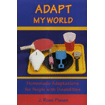
|
|
|
ADP-ADT |
Adapt This ..."Adapt This..." is a picture-book guide for adapting almost anything! Includes over 140 pages of photos and useful information. |

|
|
|
AC-AI02 Details |
Aligning IEPs to Academic StandardsFor students with moderate to severe disabilities With increased emphasis on students meeting state academic standards, instructors of students with moderate and severe disabilities have wondered about their role. Will they continue to integrate their students in the regular classrooms and in the general curriculum? Or will their participation in alternate assessments aligned to alternate achievement standards leave them stranded in self-contained classrooms once again? |
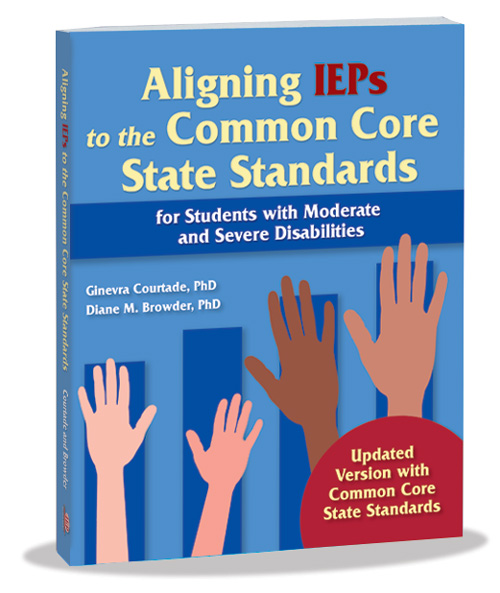
|
|
| AC-IP07 |
Better IEP MeetingsFoster positive communication with families & other IEP team members and ensure FAPE provisions Regular IEP Meetings can provide reassurance for everyone involved, or they can cause negative feelings and cause participants to lose confidence in the IEP process. In their new book, Drs. Cynthia Herr and Barbara Bateman carefully consider how to make your IEP team meetings better. |
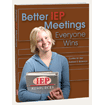
|
|
|
AC-IP05 Details |
Better IEPsA guide to legal understanding of IEP meetings A newly revised and enhanced edition of the ultimate guide to understanding IEPs from a legal standpoint, complete with IDEA 2004 updates. A classic in its field, Better IEPs presents a focused, 3-step process that zooms in on the individual student and dismisses out of hand the one-size-fits-all approach that is too often mistaken for proper procedure in today's schools. Written by Dr. Barbara Bateman, an attorney and professor emeritus and the number one expert on IEP law in the nation, and coauthored by Mary Anne Linden.Softbound book, 276 pp, updated 2006. |
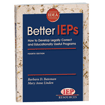
|
|
|
SHE-50112 Details Sample |
Blogs, Wikis, and Podcasts, Oh My! Electronic Media in the ClassroomTeach students how to adapt writing skills to today's technology while maintaining effective communication. This NEW book outlines current trends in electronic media and provides up-to-date research on the changing face of writing to help meet the needs of current classroom writing instruction. |
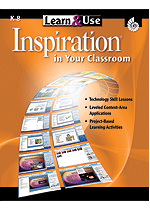 |
|
|
AC-BR02 |
BreakthroughsGrades K-12A hands-on, how-to program featuring Karen Sewell, Autism Society of America's teacher of the year. This comprehensive teacher's manual covers math, reading, fine motor, self-help, vocational and social skills, as well as providing numerous lesson plan reproducibles. Includes an exhaustive listing of essential resources for classroom setup, lessons and activities. |
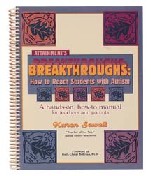
|
|
|
AC-EP02 Details |
Building Electronic PortfoliosTeach students to get involved in their own IEPs Students today are being encouraged by IDEA updates to get involved in their own IEPs. Here's a simple way to teach them how to make their own electronic portfolios so they can achieve that goal in impressive fashion. Students learn to create attractive presentation software slides about their work experiences, skills, interests and accomplishments to show at IEP meetings, to classmates or prospective employers. Authored by Professor Susan J. Glor-Scheib of the Indiana University of Pennsylvania. |

|
|
|
Book
Book + Video |
The Challenging KidAmong the most challenging and least understood students in any school are those with behavioral disorders. In this program, Professor Sheldon Braaten presents a comprehensive skill-based assessment tool for designing positive interventions with students grades K-12. Ideal for behavior plans and IEPs. The Behavioral Objective Sequence book (BOS) is a field-tested tool for assessing social competencies of students with emotional or behavioral disorders. BOS can be used as a bank of objectives, as a rating scale, or as a structured observation system. Book, spiral bound. Video, 39 min., CC, 2001. |
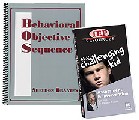
|
|
| FLS-CAG |
Choosing a GuardianThis guide will make it easy to supply your children's Guardian with a source of specific information to guide them in handling the transition and help them with the long-term care of raising your children in your absence. |

|
|
| AC-CB02 |
Community-Based Vocational TrainingA hands-on, how-to manual helps you create and maintain community-based vocational experiences for students with significant disabilities. The book's ten chapters follow a sequence of successful job placement from getting started to on-site job training. Stresses functional assessments, transition planning and supportive employment options. By using our reproducible forms, letters and assessments, you can spend more time with students and potential employers. By Dr. Jill Wheeler. Includes a Win/Mac CD with printable PDF. Covered spiral bound, 170 pgs., 2005. |
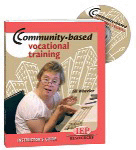
|
|
|
Conversation Skills AC-CJ02
Skills 2 AC-CJ05 |
Conversation SkillsNon-disabled workers usually lose their jobs because of character issues, but workers with developmental disabilities often lose them because of poor conversation skills and the subsequent isolation from coworkers that results. Conversation Skills, authored by speech and language therapist Marilyn Banks, covers the gamut of basic and essential communication skills and helps young people enjoy successful job experiences and fulfilling, independent lives. |
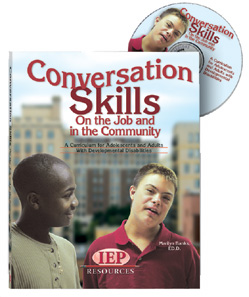
|
|
| AC-CT01 |
CoTeaching Students with AutismIn the regular education classroom Objective: Present field-tested coteaching strategies For regular and special education teachers working with students with autism.A fresh and innovative model for successful inclusion of K-5 students with autism. Authors Judi Kinney and Debbie Fischer detail their experiences and innovations in actual classrooms: Constant curriculum adaptations, inclusionary activities, discipline, pull-out issues and more. Includes numerous reproducibles to implement their ideas in your classroom. Spiral bound, 205 pgs., 2001. |
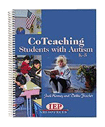
|
|
| AC-TT045 |
Dynamite EmotionsThis new program features a novella illustrated in colorful, graphic novel style. It examines how emotions affect behavior plus gives techniques to identify feelings and understand their impact. The master version, for instructors, is titled TemperTamers; the student version has a teen-friendly title, Dynamite Emotions.Dynamite Emotions begins with a mini-dictionary of 28 feelings. The main characters, a teenage boy and girl, take turns being the protagonist. The story (written at a fourth grade reading level) is lively and true to life. Sold as a package of five readers. Dynamite Emotions: Saddle stitched book in full color, 52 pages, 5 copies, 2006. |
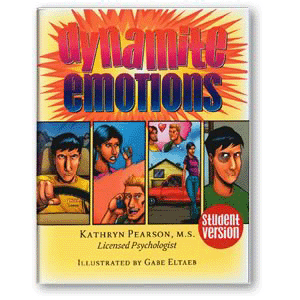
|
|
|
AC-IP01 |
Elements of Successful TeachingCriticism of our schools may be at an all-time high! One common complaint is that the objectives of education need to be more precisely defined. Dr. Barbara Bateman provides a research-based strategy that defines classroom best practices in a concise and practical text. Teachers begin by establishing an objective, then organize content through task analyses. Then teachers do what they do best, teach. The effectiveness of instruction is evaluated and either the objective is attained (rejoice) or you teach again (recycle). The book takes a discerning look at the impact of IDEA and NCLB in everyday teaching. Dr. Bateman believes that this technique can positively refocus educators in terms of what they teach and how they teach it. Softbound, 105 pgs., 2003. ISBN 1-57861-502-X |
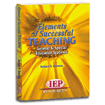
|
|
|
AC-UP02 |
Five Universal Principles of Positive Behavior Support5 universal principles for managing in-class conduct After working with children with challenging behaviors for 30 years, Dr. Annemieke Golly has identified five universal principles for managing their in-class conduct: Being Respectful, Modeling Behaviors, Having Clear Expectations, Maintaining Routines and Dealing with Chronic Misbehaviors. Here, in her latest book, she shows you how to implement them in the context of a school wide positive behavior support system.In addition, Dr. Golly looks at the two main areas of chronic misbehaviors, attention seeking and escape/avoidance behaviors, and shows you how to identify and work with them. Soft bound, 110 pp, 2006. ISBN 1-57861-590-9 |

|
|
| AC-IP25 |
From Gobbledygook to Clearly Written Annual GoalsWriting clear, measurable annual IEP goals is a difficult skill to master. The good news is that goal writing is easy once the steps are revealed. In her latest book, Dr. Barbara Bateman takes actual goals, which were poorly written and turns them into productive ones. You learn to simplify the process by focusing on just four ideas: Observable behavior, measurable criteria, a given or condition for success and a final test.Soft bound book, 140 pp, 2006. ISBN 1-58761-591-7 |
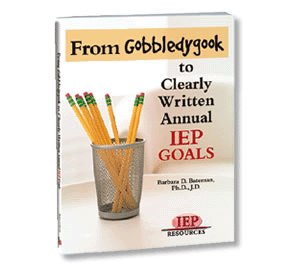
|
|
| AC-IT02 |
Implementing Ongoing Transition Plans for the IEPA student-driven approach to fulfill IDEA mandates This unique and exciting text uses a student-driven approach to fulfill IDEA mandates. Pat McPartland, a special educator with twenty years classroom experience, presents a concise yet comprehensive program for graduation-track special education students. It focuses on the seven areas mandated by IDEA: Functional assessment, daily living skills, post-school adult living, employment, community experiences, related services and instruction. Each area has a sequence of skills and behaviors written as objectives that teachers, parents and students review for inclusion in the IEP. A ready-to-go, yet easy to personalize pre-IEP assessment starts the process. A gem of a book for any secondary special education teacher or administrator. Spiral bound, 132 pp, 2004. |
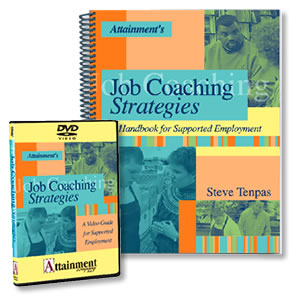
|
|
|
AC-KT02 Details |
Kid TipsKid Tips provides strategies for students with learning disabilities in grades 3-8 with 256 simple study tips to help them succeed. All tips are authored and field-tested by actual students and organized in 9 areas: Math, reading, writing, organization, homework, memory, studying, test taking and project completion. This classroom-based program is authored by learning differences instructor Kathy Young. Improves grades, confidence levels and feelings about school. Spiral bound, 145 pgs., includes Win/Mac CD with printable PDF, 2003. |
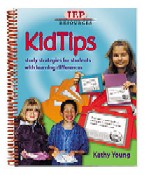
|
|
| AC-LT01 |
Learning from those We SupportA disability awareness handbook A concise yet thorough introduction to disability issues. Learning from Those We Support is intended as a primer for those who provide direct services to adolescents and adults with disabilities and require inservice training. Ideal for adult service personnel, general education staff and paraprofessionals. Created by Dr. Jill Wheeler, author of A Way to Work and a b advocate of disability rights. Learning from Those We Support covers four areas: Cognitive disabilities, brain injury, mental illness and challenging behaviors. In a clear and straightforward manner, Dr. Wheeler gives you the basic information you need to know to work effectively and responsibly. 88 pages, 1999. |
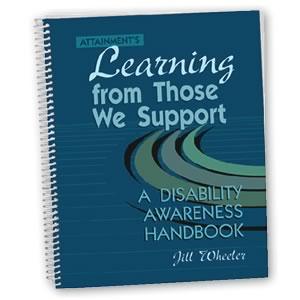
|
|
|
AC-ON02 Details |
One-on-OnePresent structured learning activities, for non-compliant low functioning students with minimal skills For staff and parents working with low-functioning children with autism and other developmental disabilities. One-on-One is for those who teach non-compliant students with minimal skill repertories. Developed by Marilyn Chassman, it chronicles her 5 year effort to home school her aggressive, non-communicative child with autism. Over 30 step-by-step structured learning activities to recreate in your classroom. Covers dealing with aggression, record keeping, self-help, communication, fine/gross motor skills and sensory toleration. Spiral bound, 116 pp, 1999. |
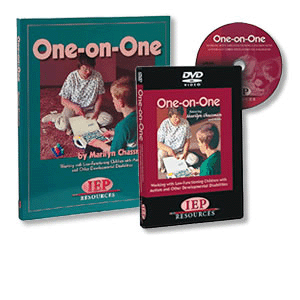
|
|
|
AC-OR02 Details |
Organizing your IEPsFormat for scheduling & implementing IEPs for all staff As instructors you have become increasingly swamped with IEP-related paperwork in recent years, often putting you in the awkward situation of not having adequate time to do what you were hired to do, TEACH to the student's IEP. Author Shelley Peterman Schwarz and professional office organizer Nancy McKinney have collaborated on a book that will help you take back control of the IEP organizational process and will allow you to spend your primary time actually teaching to student IEPs. It includes sections on organizing your paperwork, collecting data, tracking annual IEPs and three-year reevaluations, and organizing an electronic file system.Includes a Win/Mac CD with a printable PDF that contains all the reproducibles in the book. Softbound, 98 pgs., 2005. |
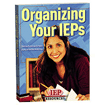
|
|
| AC-PO02 |
Positive Behavior CurriculumA comprehensive behavior curriculum for anger management and proactive skills in the inclusive classroom. Grades 4-5This guide presents a comprehensive behavior curriculum that incorporates inclusive educational practices with conflict resolution, anger management, multicultural sensitivities and proactive social skills. Presents practical suggestions for curriculum adaptations, approaches for running cooperative learning activities, tips for setting up and managing inclusive classrooms and easy to administer worksheets. Spiral bound, 233 pgs., 2002. |
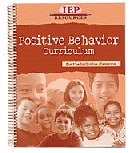
|
|
|
AC-PSE02 Sample |
Practical Strategies for Elementary School InclusionDr. June Stride advocates for including all elementary students in the general classroom to the maximum extent possible. This book shows you how it can be done easily and effectively while improving student results on standardized tests and making all children feel they belong. Softbound, 190 pgs., 2005.Also available in the Practical Strategies Set with Practical Strategies for Middle School Inclusion and Practical Strategies for High School Inclusion. |

|
|
| AC-PSB02 |
Practical Strategies for High School InclusionAuthor June Stride writes candidly about her career as a teacher and department head. She explains the who, why, how and the legal aspects of implementing inclusive programs. Practical guidelines, tips, surveys, do's and don'ts and tips for teaching enhance this easy-to-read book.Also available in the Practical Strategies Set with Practical Strategies for Elementary School Inclusion and Practical Strategies for Middle School Inclusion. Softbound, 218 pgs., 2004. |
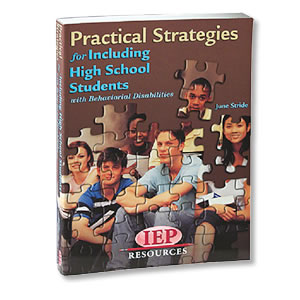
|
|
|
AC-PS02 Sample |
Practical Strategies for Middle School InclusionEasy-to-use suggestions on important topics like grading, coteaching and peer acceptance Author Eileen Bowers, an inclusion teacher for many years, shows how to put together an inclusive program that works for everyone involved, from the administration to the students. Dozens of easy-to-use suggestions on important topics like grading, coteaching and peer acceptance. Softbound, 157 pgs., 2004. ISBN 1-57861-498-8 20020701N |
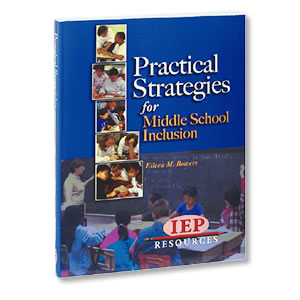
|
|
|
Kit
Math
... Thinking
Language
Guide
Teams |
School to Work SkillsThis comprehensive program focuses on skills correlated with the Department of Labor SCANS 2000 guidelines, which detail the necessary skills students must master in order to be prepared for entering the work force. The Complete Program consists of eight reproducible binders that cover basic language arts, basic math, working in teams, and critical and creative thinking. The included Teacher's Guide correlates the entire program. All components are also available separately.Contents (available separately)
|
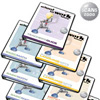
|
|
| See Description |
Take and Teach Language KitsIntended for children with moderate to severe cognitive disabilityTake and Teach Topic LinksEach CD has the following items in pdf format
Link to Individual Items for price and purchase |
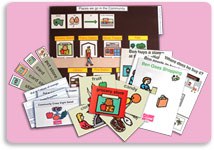
|
Most $30.00 |
|
AC-TC04 Details |
Teaching Self-DisciplineA self-monitoring program to integrate self-discipline instruction in the general curriculum for staff working with all students grades K-12.Lack of discipline is a common cause of ineffective instruction. Yet rarely is self-discipline taught in order to create an instructional atmosphere, one in which teacher and student are comfortable and productive. Author Dr. Dennis Knapcyzk, Indiana University, looks at classroom discipline as a curricular concern, comparable to teaching reading and math. In this book, he shows you how to present discipline to students by cueing them to performances by socially competent same age peers and incorporates discipline training into the general curriculum. Softbound, 150 pgs., 2004. |

|
|
|
Book AC-TC16 |
Teaching Social Competence PackageSocial skill assessment and intervention strategies of children grades 1-6 Teaching Social Competence provides social skill assessment and intervention strategies for staff working with children grades 1-6. Poor social skills not only make for unhappy and often lonely students, they have a measurable impact on academic achievement. On the other hand, achievement improves when social skills improve.Authors Dennis Knapczak and Paul Rodes recognize that school is a social environment with its own definition of appropriate behavior. They urge social behavior assessments based on behavior of socially competent peers. When preparing interventions, they suggest setting attainable goals and working on one skill at a time. The book includes numerous reproducibles to help you observe, assess and plan successful interventions. The DVD profiles three kids who struggle in class because of social deficits, making suggestions for improving their grades and their lives. Useful and efficient for IEP planning.
Book, spiral bound, 196 pp, 2001. |
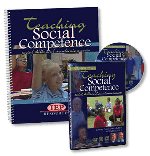
|
|
|
AC-TT02 |
TemperTamersProvide strategies for anger management in children who struggle with controlling emotions in Grades 1-6.An 8-session step-by-step anger management program for elementary age children struggling with behavior control. Uses small groups to teach students appropriate coping strategies. Each session follows a sequenced format: Homework review, mini-lecture, TemperTamer stories, learning activities and next-week's homework. Showcases 27 pages of illustrations expressing all basic emotions. Includes IEPs and student reproducibles. By Kathryn Pearson, M.S. Spiral bound, 135 pg, 2002. |

|
|
| AC-TT01 |
TemperTamers for AdolescentsThis new program features a novella illustrated in colorful, graphic novel style. It examines how emotions affect behavior plus gives techniques to identify feelings and understand their impact. The master version, for instructors, is titled TemperTamers; the student version has a teen-friendly title, Dynamite Emotions. Created by psychologist Kathryn Pearson.TemperTamers Reader for Adolescents master version includes Dynamite Emotions student reader content, discussion questions, a Think About It section, plus reproduction rights. Covered spiralbound book in full color, 72 pgs., includes Win/Mac CD with printable PDF, 2006. ISBN 1-57861-576-3 |
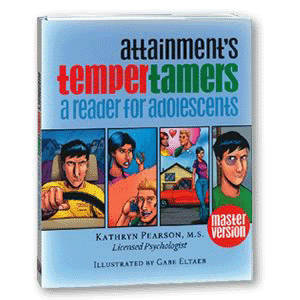
|
|
| AC-UM02 |
Understanding My Learning Differences23 pull-out sessions to prepare LD students grades 4�5 with learning differences for middle schoolDuring years of teaching elementary students with learning disabilities, author Susan McMurchie developed a program to help them build awareness of their learning differences. Her program provided students in grades 4-5 with strategies to cope with and overcome differences before they transitioned to middle school. Understanding My LD has 23 topics divided into 5 sections: LD Awareness, Coping Skills, Self-help Skills, Study Skills and Road to Success. Each topic includes a lesson plan, reproducibles and desired outcomes. |
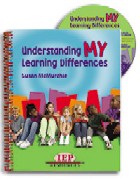
|
|
|
Grades |
Using Assistive Technology to Meet Literacy StandardsFor IEP teams Excellent assistance for writing goals and objectives. These books are organized by grade level; K-3, 4-6, 7-12. The books provide AT solutions and sample IEP goals, and cover a wide range of AT options, from digital talkers to slide-on pencil grips. Curriculum areas include reading, writing, written and oral composition, listening and speaking.
Grades K-3, spiralbound book, 325 pgs., 2002. |
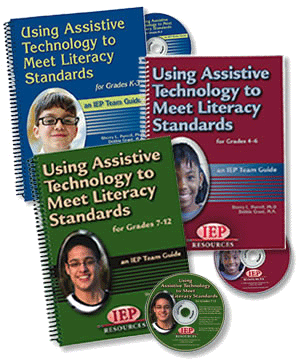
|
|
| AC-IP04 |
Why Johnny Doesn't BehaveWrite better behavior intervention plans Objective: Manage student conduct by teaching replacement behaviors for inappropriate ones. All staff K-12.Focus on 20 tips to help you avoid behavioral problems, including: Clear class-room expectations; directly teaching expectations; minimizing attention for minor inappropriate behaviors and attending to behavior you want to encourage. The second section is dedicated to Functional Behavior Assessments (FBAs) and Behavioral Intervention Plans (BIPs), beginning with an explanation of each and ending with sample FBAs and BIPs so you can learn to write your own. Authors Drs. Barbara Bateman and Annemieke Golly Softbound, 122 pp, 2003 |
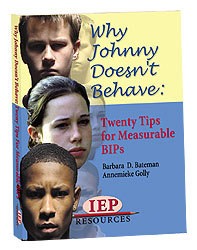
|
|
|
AC-IP02 Details |
Writing Measurable IEP Goals and ObjectivesA guide to quick, effective writing accurate, measurable IEP goals A guide to quick and effective writing of accurate and measurable IEP goals and objectives. Many special educators view IEPs as burdensome, but IEPs are necessary, required by law and when done properly can be extremely helpful in guiding the student's educational trajectory. The art and science of writing truly measurable goals and objectives can be mastered so they are easy to compose, aren't time consuming and can be grasped by all appropriate staff and parents as well. By two leading special educators and IEP legal experts, Drs. Barbara Bateman and Cynthia Herr.Softbound, 136 pages, 2003 |
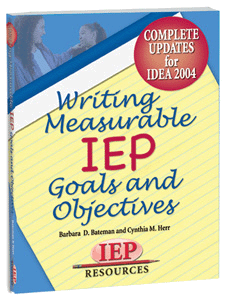
|

